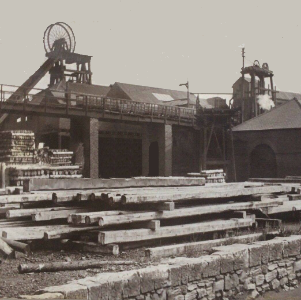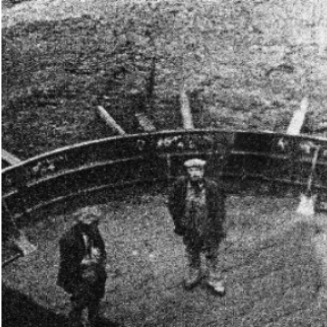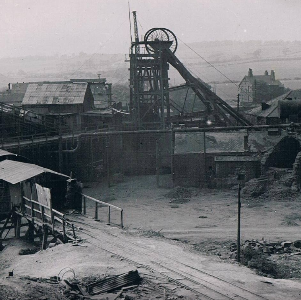
The Valley from Concept to Closure 1856 to 1989
By the 1800`s coal mining was becoming more advanced, and the methods used to sink deeper shafts was improving all the time. Geologists had a better understanding of the strata within
the coalfields. Boreholes, geological surveys and existing shafts were used so that maps could be made which showed the coal seams (depth and thickness), any fault lines and what type of ground
would be encountered. All this information allowed the mine owners to make a more informed decision when considering the location of a new colliery.
It was widely recognised that the most skilled shaft sinkers of the day were from the North East. However a number of companies capable of taking on the task had sprung up in the Yorkshire
Coalfield. By 1850 many new collieries had been or were being sunk across the West Riding and these new companies were rapidly gaining ground on their more experienced counterparts from the
North East.
By 1854 Edward had become well aware of how profitable a coal mine can be. The Beaumont family had strong connections to the Wentworth family through marriage, and both families had members with the experience required to open up a new coal mine. With that came the potential to make a substantial return on their investment. but as many mine owners discovered investing in a coal mine also carried the risk of it becoming a loss-making liability. The image below shows shaft sinkers working at Darfield Main in 1856/57. Please note this is handed down information which has not been validated



Darfield Main Colliery 1860
In the early stages of planning several discussions took place on what to call the colliery. In 1856 Wombwell Main was already operational and the unwritten rule of thumb was that the first colliery in a town would be known as (name of town) Main. Not all colliery owners followed this principle some preferred to use the name of a wife or daughter such as Isabella or Victoria, while others would use the location with the name of the main seam. In the end the colliery was named Darfield Main. Even so in the early days the pit was often referred to as Low Valley Colliery.
Edward Blackett Beaumont and his partners were the driving force behind plans for a new colliery in Wombwell. Edwards background was not in mining, his primary business interests were in land acquisition and by 1839 he had purchased quite a portfolio of land in the Low Valley area.
Brick kilns were erected on one of the sites, and a successful Clay Works developed quite quickly. In addition to the Clay Works, housing was built and at one point a fireclay mine was in operation. The works were eventually sold to James Goody. The Fireclay mine closed in 1899, but the shaft was then used as a pumping station for Darfield Main. When work began on Darfield Main Colliery in 1856, Wombwell already had three pits working the Barnsley Bed. The seam was top quality and would serve industry well for many years to come,
but it did have some known safety issues. Spontaneous combustion and large pockets of Firedamp meant that the seam could be unpredictable and was certainly prone to explosions.
The company`s main objective was to reach the Barnsley Seam in 1858. What they didn`t know was that the thick band of Melton Field Rock was water bearing strata. Once the sinkers began working through the rock the inevitable ingress of water forced all work to stop until a suitable solution could be found. This not only caused considerable delays it also put the project at risk. Experts were consulted and the mine engineers looked at some of the solutions other Collieries had implemented. A decision was made to line the shafts with cast iron tubing brought in from Germany. It was a costly solution, but it solved the problem and ensured that work could recommence.
Shaft sinking was completed on the 28th August 1860 almost 2 years and some £100,000 over budget ! The Barnsley Bed was won at a depth of 337 Yards, with at least 50 years of reserves.